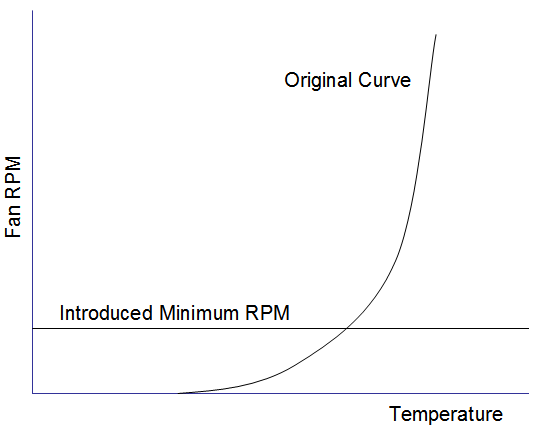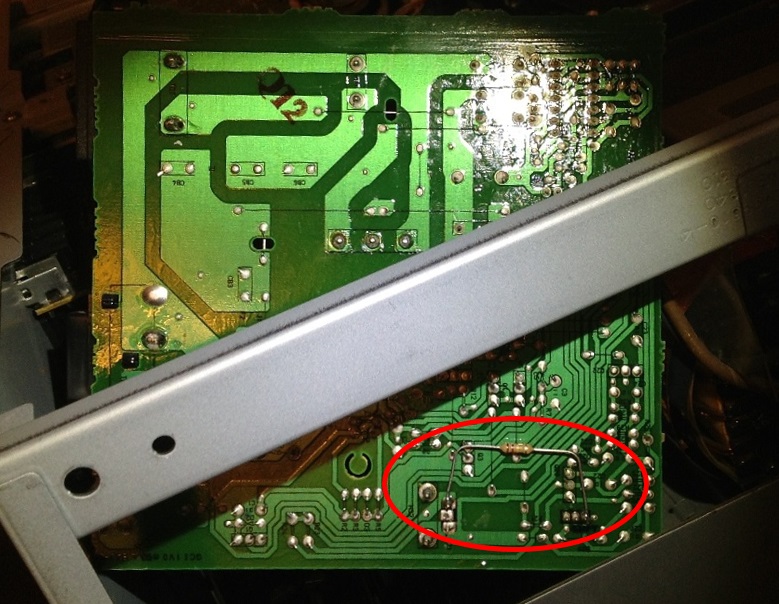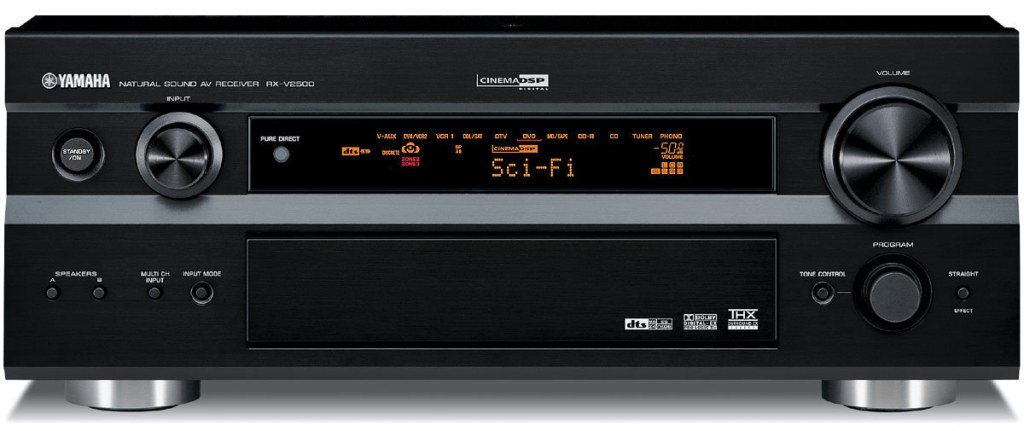Lowering the Idle Temp of Yamaha RX-V2500
15 Sept 2013
RX-V2500 is a powerful receiver. The respectable 130W/ch at 0.04% THD is well complemented with the user tweakable 7-band/ch programmable filters that allow for changing their frequency, gain and Q-factor (or YPAO, in Yamaha lingo).
Although the receiver delivers outstanding audio performance, it operates rather inefficiently and has a mild temperature problem. The Yamaha engineers went for a linear power supply and a traditional class A/B power amplifiers making the unit dissipate much more energy as heat than what is delivered to the speakers (at "normal" listening levels). The operating temperature is further exacerbated due to obstructed air convection. The heat channel cools the unit effectively only when the fan spins which never happens in practice, due to an overly aggressive acoustic design point.

The unit is equipped with a fan blowing air from the transformer into a channel made from the aluminum heat sinks of the power amplifiers and LDOs.
I was determined to make the receiver run cooler. Altering the efficiency, particularly at idle, would increase harmonic distortion, so I was left only with the option of modifying the fan rpm vs. temperature curve. I opened the receiver up and studied the fan control circuitry for a tweak. For a surprise, the design, though simple conceptually, was implemented in literally 10x the number of components I would have expected. To make matters worse, the simple fan control was distributed to several boards.
With details abstracted, here is the fan control diagram:

Since I don't have a Yamaha serial programmer, nor tools to download, disassemble and modify the microcontroller's firmware, I decided to do an analog fix in the linear regulator (LDO) by setting a certain minimum output voltage. This has the extra benefit of preserving the Yamaha stock fan curve, in addition to preventing overheat, even in the event of a CPU crash.

The new fan curve.
The above can be achieved with the introduction of just a single new biasing resistor at the base of the final power BJT. This circuitry resides on the main AC power board, housing the AC in and switched AC output sockets.

The new resistor.
The resistor should be soldered between the top transistor pin and the rightmost socket pin, as shown above. I left the resistor's legs long enough so its body can touch the PCB far from any pins. I also covered the PCB area under the resistor with an insulatory tape to prevent the legs from shorting another component. Afterwards, I added more tape over the resistor itself to better hold it in place and prevent shorts with the chassis.
The newly introduced resistor controls the idle fan speed. Empirically I determined that 150k makes the fan barely start, while 100k spins it fast enough to be noticeably audible. I chose 120k.
After this procedure the receiver idles at around 40 oC making it pleasant to touch and hopefully lasting for many more years.

Brushed aluminum front panel covers the powerful internals.
Comments for Lowering the Idle Temp of Yamaha RX-V2500
Adriano on May 12, 2014
Hi, I'm from Brazil and recently got a 2500. I was very worried about heating it and searching the net, I finally found your post. I made the changes that you explained so well and now I am very happy because my receiver does not heat anymore. Thank you very much.
stef on October 8, 2015
Hello I m from france, I just realized your change. thank you for this information my 2500 now no longer hot.
Ev on February 23, 2021
Can you use potentiometer instead? Where do you connect ground pin in that case?
Josh on November 7, 2021
I applied this modification to my RX-V2600, since the board looks identical. However the fan speed is slightly fluctuating (multimeter shows around 1v amplitude). Is this normal?
Tom Kouwenberg on February 14, 2022
i did the mod on 2 RXV2500 and a RXV2400, that has a different layout, but same components, resistor at the base of final power BJT and the + of the fan, easy fix, cool amp!
Tom Kouwenberg on February 15, 2022
Also do the C4 mod on RXV1500, RXV2500 and RXV1600, RXV2600, RXV 1800 and RXV3800, might be more models, I only repaired these... change the 22 nF, usually much lower, after a few years, mine were 8 nF (!) for a good Wima 22 nF cap, otherwise it will not start up after a few years use.